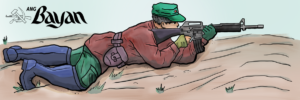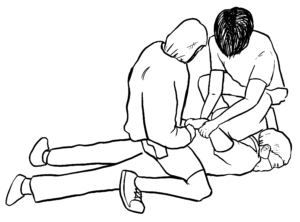The oppressed condition of tuna fishing workers

No fixed working hours, backbreaking work lasting 24 hours. This is how workers on large ships in General Santos City described the working conditions in purse seiner or onay operations.
Onay is commercial fishing operations that employ large nets to catch fish where ships sail in distant oceans for more than half a year.
Onay operations produce the largest catch of tuna. In 2020, it caught 152,867 metric tons (MT) or 60% of the total 254,779.32 MT of tuna that landed in the city. Of the total onay catch, 44.5% come mainly from the Moro Gulf, Sarangani Bay and Sulu Sea, while 55.5% come from the mid-seas, specifically in the Western and South Pacific, and the oceans of Indonesia and Papua New Guinea. Skipjacks and yellowfin are the main catches in onay operations. The bulk is processed by tuna canners in General Santos City.
In recent years, payaws (floating devices designed to attract fish) are being used widely by ships to increase the catch. This has led to the depletion of young fish and endangered marine animals that often are caught with the tuna. Often, large-scale onays are also involved in illegal and unreported fishing.
Most of the onays in General Santos are small and medium-sized. There are 1,690 vessels employing 15,500 workers. There are also 16 large-scale and 18 “superseiners” (jumbo) in operations owned by local and foreign companies. They operate 230 vessels and employ more than 2,000 workers.
RD Fishing Group operates the largest onay in the city. It is owned by the Rivera family, who also own RD Pawnshop and more than 40 other businesses. They are also one of the political rulers in General Santos, where Ronnel Rivera has served as mayor for the past nine years. (He was replaced in the recent elections by his ally Lor Pacquiao, Manny Pacquiao’s sister in law.)
Slavery and Exploitation
Of the total 17,500 onay workers, it is estimated that only around 30% are city residents. Most come from the various coastal provinces of Mindanao and the islands of the Visayas. Onay workers usually stay at sea for 6-7 months. They are only allowed to land after six months to compute working hours and collect their wages. It means long-term separation from from their families and exposure to volatile and harsh weather conditions and ocean hazards.
During times that seafarers are at sea and receive no pay, their families are forced to borrow money from onay owners. They are typically charged at 10% interest which is automatically deducted from the wages of the sailors. There are cases where debt-strapped family members are enslaved by the onay owner.
The income of an onay depends on the amount of fish caught. The method of setting it is arbitrary, from weighing and calculating the value. Payment for loans invested in the operation will be deducted on the sales. Usually, only 14% of onay’s net income goes to workers as wages while 86% is the “clean” income that accrue to the operator.
Wages of seafarers barely meet the set minimum wage in the region. Little is left of it after paying off what their families debts.
Seafarers have no unions. They do not have health benefits and insurance, even though their jobs are high-risk. Minors are openly employed openly despite this being prohibited long before. Illegal fishing in foreign waters also continues even though seafarers get caught and detained in Indonesia and other countries every year. Often those caught are abandoned by their employer or by the company they work for.



